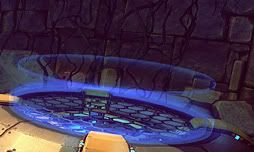The BRAWL² Tournament Challenge has been announced!
It starts May 12, and ends Oct 17. Let's see what you got!
https://polycount.com/discussion/237047/the-brawl²-tournament
It starts May 12, and ends Oct 17. Let's see what you got!
https://polycount.com/discussion/237047/the-brawl²-tournament
Animated material on a cylinder
I am sure this is very basic but I looked through the Material Compendium and although it is helpful in definning what the nodes do it is not very helpful in describing there common use applications.
What I want is a ring of light to travel up a cylindrical mesh and then disappear. like a teleporter emitting a ring of light that pulsates and travels upward then fades away.
kind of like this picture ORB posted

What I want is a ring of light to travel up a cylindrical mesh and then disappear. like a teleporter emitting a ring of light that pulsates and travels upward then fades away.
kind of like this picture ORB posted

Replies
How would I go about doing this? I assumed if I were to take an alpha and plug it into the Opacity Mask input that has the blend mode set to Blend_Masked, that It would fade in and out. But I cant get it to work.
here is a screen shot
http://i229.photobucket.com/albums/ee301/knak47/Polycount/matyerialMasked.jpg
I think you have to make the material BLEND_Translucent, BLEND_Masked as far as I know takes the edge of a 1 bit alpha (like in a dxt) and anti aliases the edges so they aren't hard.
That will give a fade from white to black evenly along the height of the object. Used for opacity, it should fade things out as they move up.
Adding in a clamp and an exponent for control should help.
ANd yes Masked is a 1 bit kinda thing. You need translucent for alpha blended opacity
The lines are just generating from a sine and tex coords n stuff.
edit: ok so you just want the pulse to fade in toward the middle and out toward the top?
Use the same setup I have above, but plug the divide node into a cosine rather than 1-x. That will give you a centered gradient falloff.
Just multiply that by your stripe and it will fade in and out over the mesh you have it applied to.